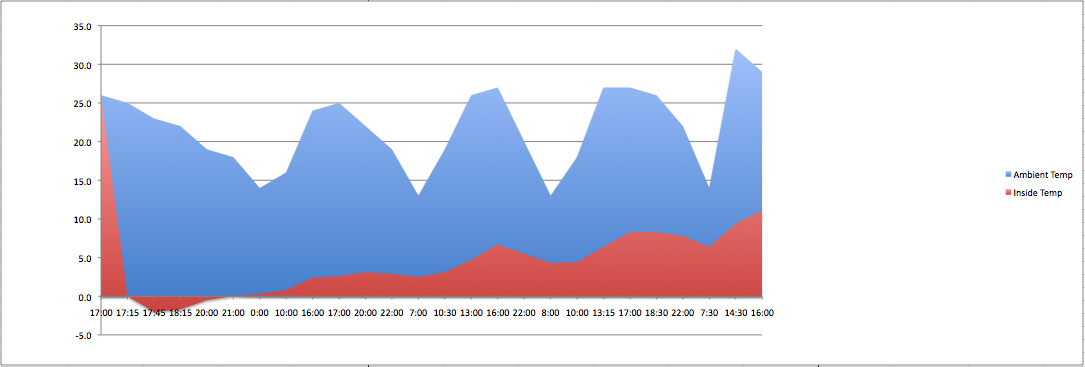I’m nearing the end of a multi day test of our camping esky, using the new “techni ice” sheets recently purchased from ebay.
Although I’ve left the lid sealed for the four days, there wasn’t any thermal mass in the esky in the form of cold food to start the process, so I feel it gives a good indication of how things may perform over a similar period whilst camping. It will certainly provide a benchmark for testing other methods, eskies, and ice types.
To begin a 5 litre solid ice block and 2 x 2litre solid ice bottles were placed in the esky. The 5 ltr block forms a space at one end which was lined with sheets of techni ice and a foam lid placed on top to form a “freezer” section. The other techi ice was placed on the base of the esky. All up, 6 sheets of techni ice.
The thermometer probe was placed in the freezer section and the lid shut.
Readings were taken of ambient (outside) and internal temperatures at different times, as convenient.
It took four days for the temperature to get above 10 degrees C. The esky was sometimes in the direct sun.
The data was entered into excel and a chart created to show the results.
The horizontal scale isn’t, to scale that is! But it is close enough and you can see the daily cycles by the ambient temperature drops at night.
The temp only got much above 5C by the end of the third day. Quite good I think!
It will be interesting to see how things go in the real world of kids opening the esky all the time and food being taken out and put back in. The freezer idea will be a good one I think, with frozen food not being exposed to warmer food or open lids. I just need to perfect my lid making process. The last fibreglassing attempt was a distaster!
I hope to discuss esky management issues more in the future. Strange hobby, I know!
Brian.
